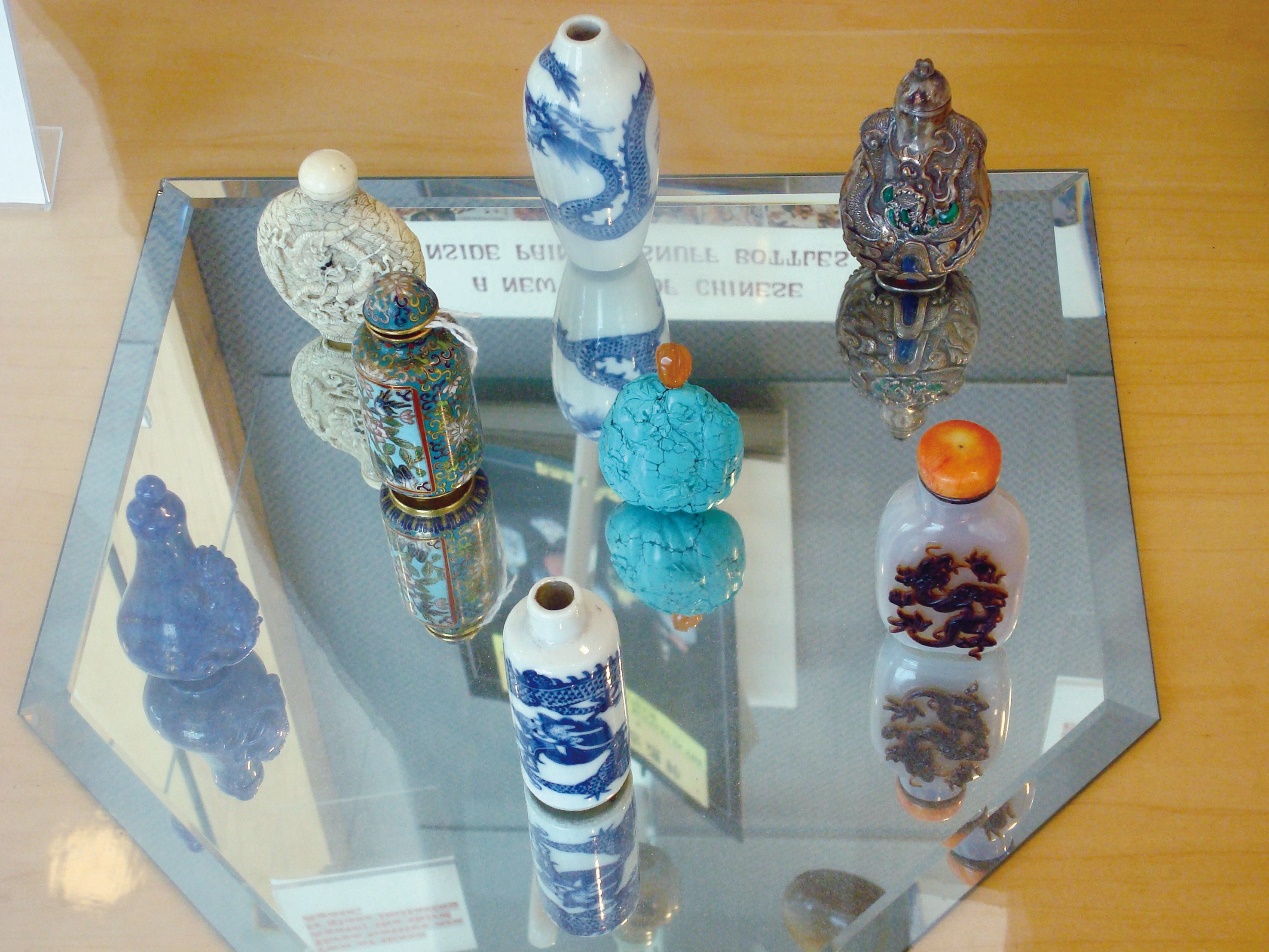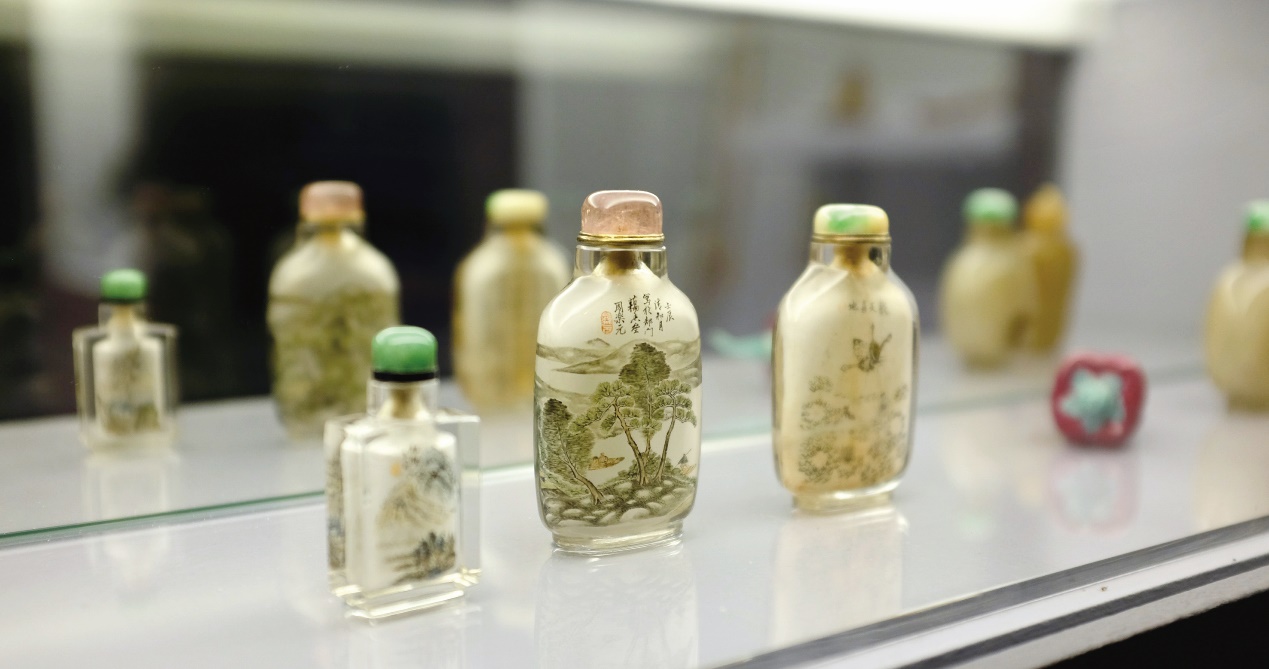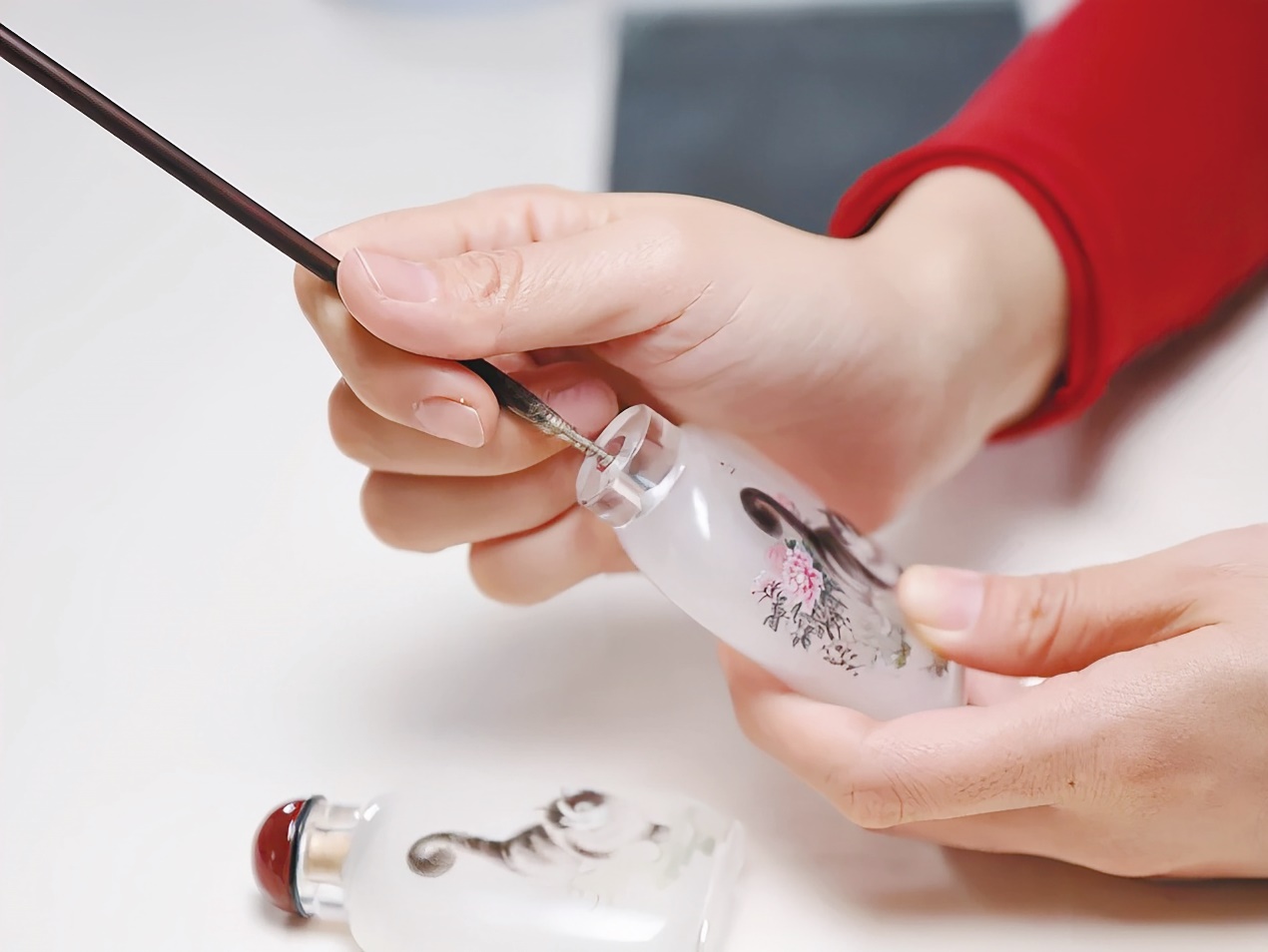

By Xie Zongming
Speaking of Chinese intangible heritages, the first impression is likely to be some old and unique culture that you’ve never thought existed. In fact, Chinese culture has been open and inclusive, for which it also absorbed culture from other countries. For example, in Tang Dynasty, many foreigners and minorities, who would all be considered foreigners then, legally studied and worked in China. Some even served the royal court. Thus, it is not a surprise to see snuff from the west getting accepted by rich merchants and the royal family. Receiving the growing demand for snuff bottles from the upper-class society, craftsmen were busy developing the decorating techniques of snuff bottles and soon created an astonishing art, the inside painting.

A symbol of social status
Snuff entered China in the Ming Dynasty (1368-1683). According to the historical record written by Zhao Zhiqian, the Italian Jesuit Priest Matteo Ricci brought snuff as one of the gifts for the emperor in 1581. Merchants at that time also introduced snuff to the Chinese market but it was far from popular. It was not until the Qing Dynasty (1636-1912) that this product gained popularity in China. In that period, snuff and snuff bottles were common gifts awarded by the emperor to the ministers. Besides, the snuff at that time was imported from Germany, Spain, and France, making it a luxury that is only affordable for the upper-class, for which carrying an exquisite snuff bottle is, in turn, a symbol of high social status.
Originally, the snuff tobacco was contained in a snuffbox the same as the western users did when it first entered China. In Qing Dynasty, as the number of snuff users grew, Chinese people realized that the snuff being contained in a box would cause several problems. First, it would be easy to spill this expensive tobacco when being opened, especially for boxes that have a tightly-fitted cover. Second, opened boxes would expose the snuff directly to the wind blow, which is disastrous considering the high price of snuff. Finally, opened boxes expose too much air, making it easy to lose the fragrance. Therefore, the snuff users decided to use a small bottle with a lid to carry the snuff. The earliest snuff bottle in China is considered to be a small bronze bottle carved with patterns of a Chinese dragon in the clouds, which is estimated to be made during the reign of the Shunzhi Emperor (1643-1661). For commoners who could not afford such expansive materials, they chose to use empty bottles that were originally made for containing traditional Chinese medicine to carry the snuff.
As snuff had slowly gained its popularity regular bottles were not enough for the merchants and ministers to show off their financial status. The rich started to use different materials to make snuff bottles, such as porcelain, jade, enamel, and glass. Then, the bottles will be decorated with paintings that allude to poems or historic stories. Craftsmen have gained considerable experience and remuneration from this “snuff bottle craze”. Eventually, the decorating technique was developed into the inside painting technique.
Tips:
Snuff reached the peak of its popularity in the late Qing Dynasty. At that period, even regular carters had the habit of using snuff. As time went by, snuff has gradually lost its popularity to the cigarette. The art of snuff bottle making survives to this day and snuff bottles are still popular among art collectors. However, in today’s Mongolia, people are still using snuff, believing that it has medical use.
An art that seems impossible to make
The inside painting technique was developed in the late Qing Dynasty. In the folklore, the idea of inside painting was raised by a nobleman, who tried to pick the leftovers in the snuff bottle with a tiny spoon and accidentally left scratches in the transparent bottle, making it look like an abstract painting. He then asked craftsmen to make a snuff bottle with paintings inside and had the first inside-painted snuff bottle. Because the technique appeared rather late in history, the technique is almost incomparably exquisite and was called “the whole of Chinese art in the palm of your hand”.

The inside painting consists of various processes, which can be divided mainly into 2 stages. First is the preparation. A snuff bottle artist also needs to master the glass-making technique. The whole stage consists of 8 processes, such as glass making, bottle hollowing, inside glass-grinding, etc. Only after these processes, a glass snuff bottle with frosted inside, for which the pigment can stay on the inside of the bottle, is ready for painting. Then, the artist can start painting by outline, coloring, and writing. Throughout these processes, the artist will use a special brush that shapes like a fishing hook and put it into the bottle to paint from inside. Because the bottle and the brush are very tiny, the artist needs to have skillful control in the strength and precision of their fingertips. Also, since the painting is done inside, the artist needs to keep a mirror image in mind and have incredible hand-eye coordination. Most importantly, the inside of the bottle is frosted, which means the artist cannot see the location of the brush before it touches the internal face. Altogether, the difficulty of this technique is like painting on a small piece of paper with your non-dominant hand while being blindfolded.

This art has regional schools like many other Chinese arts. Beijing school has the longest history, whose themes are usually about historical stories and poems and gain the most popularity. Today, there are also Hebei, Shandong, and Guangdong schools, etc. Each school has different features. For example, Hebei school is good at portrait painting and Guangdong school uses bright colors, whereas Shandong school does well in creating the porcelain sheen. No matter how they differ in skill, the common fact is that they are all preserving an incredibly beautiful art for Chinese people.
桂ICP备14000177号 Copyright@2006-2013 Guangxi China-ASEAN Panorama Magazine Agency Co., Ltd. All Rights Reserved